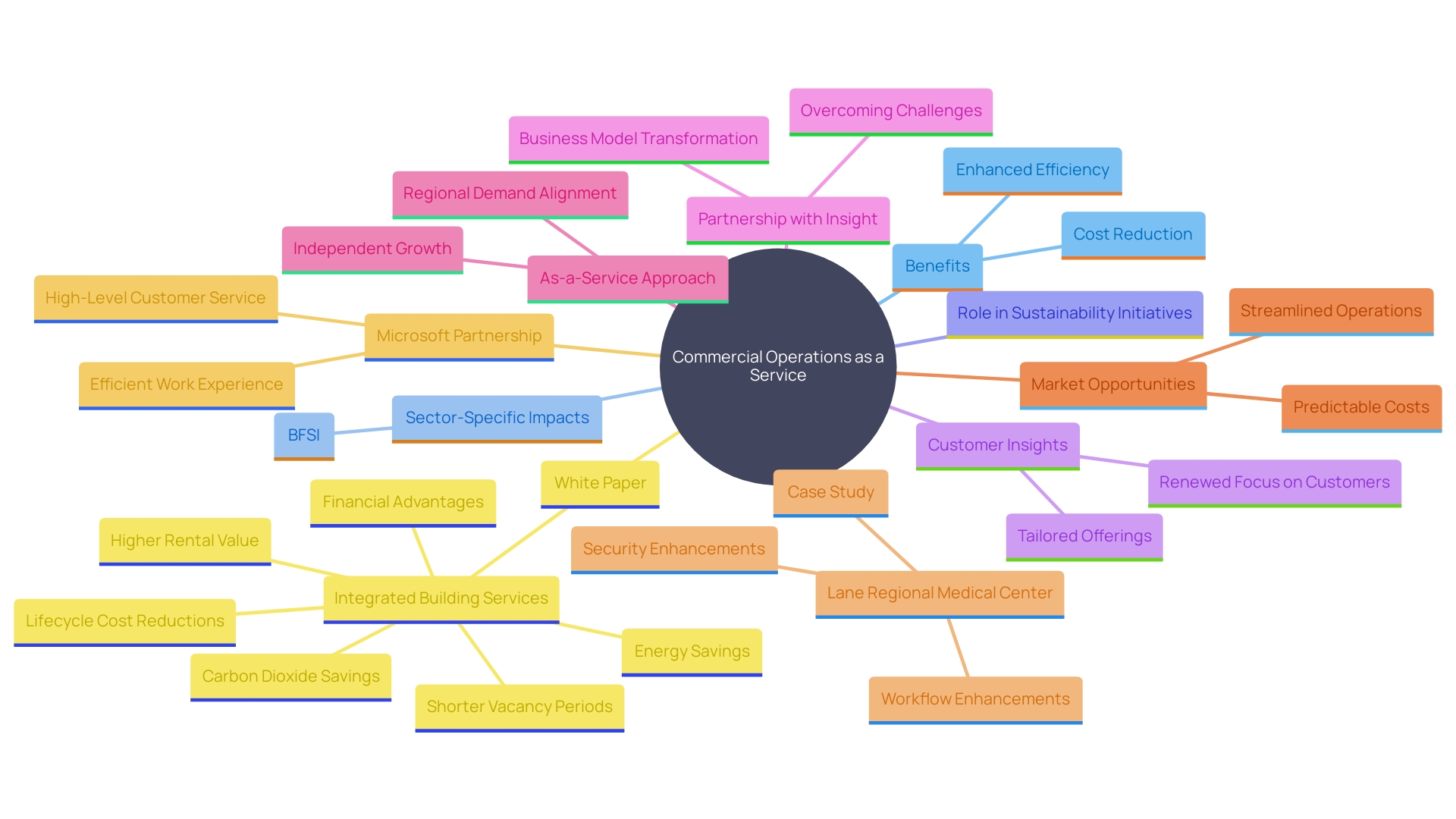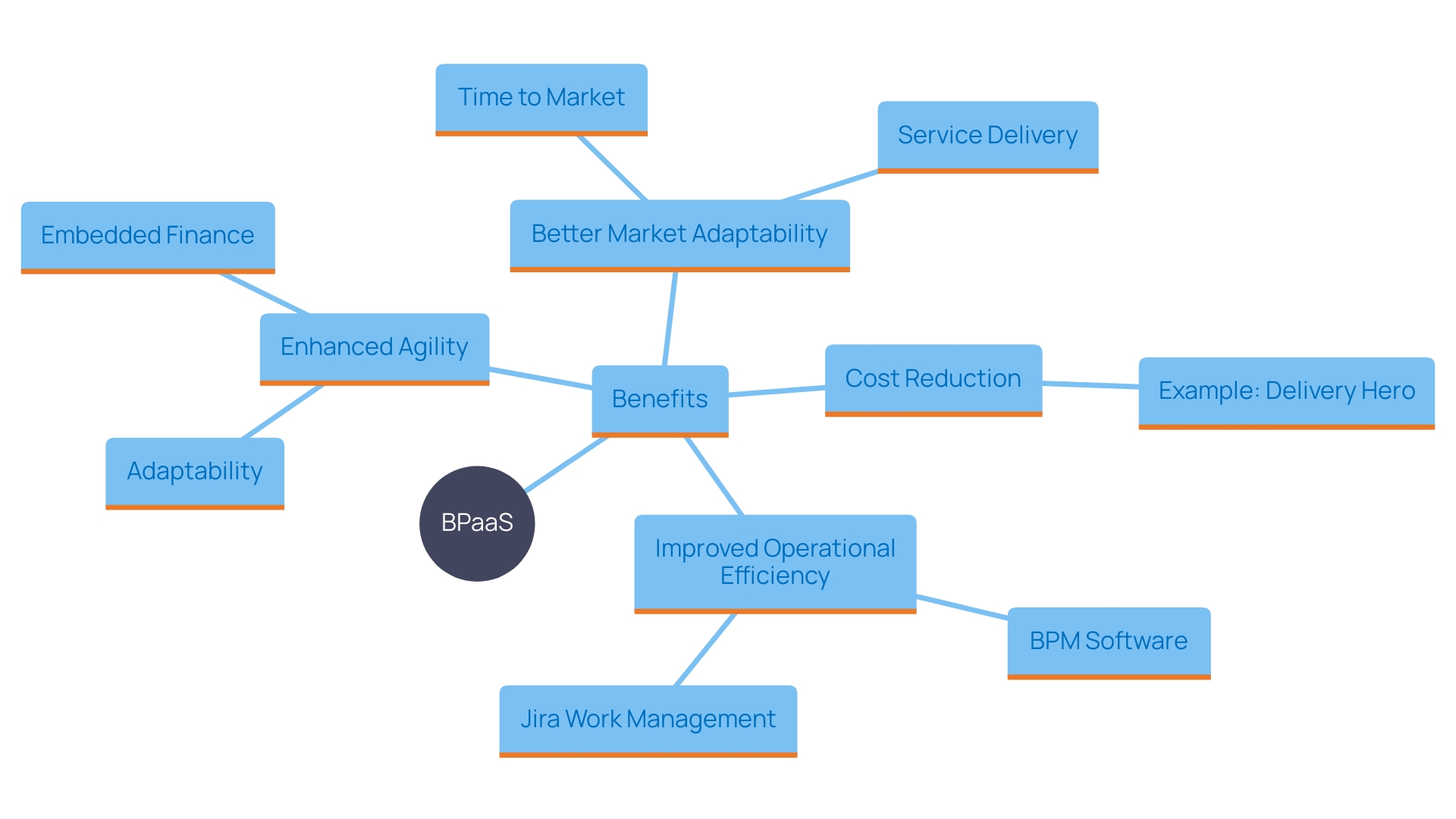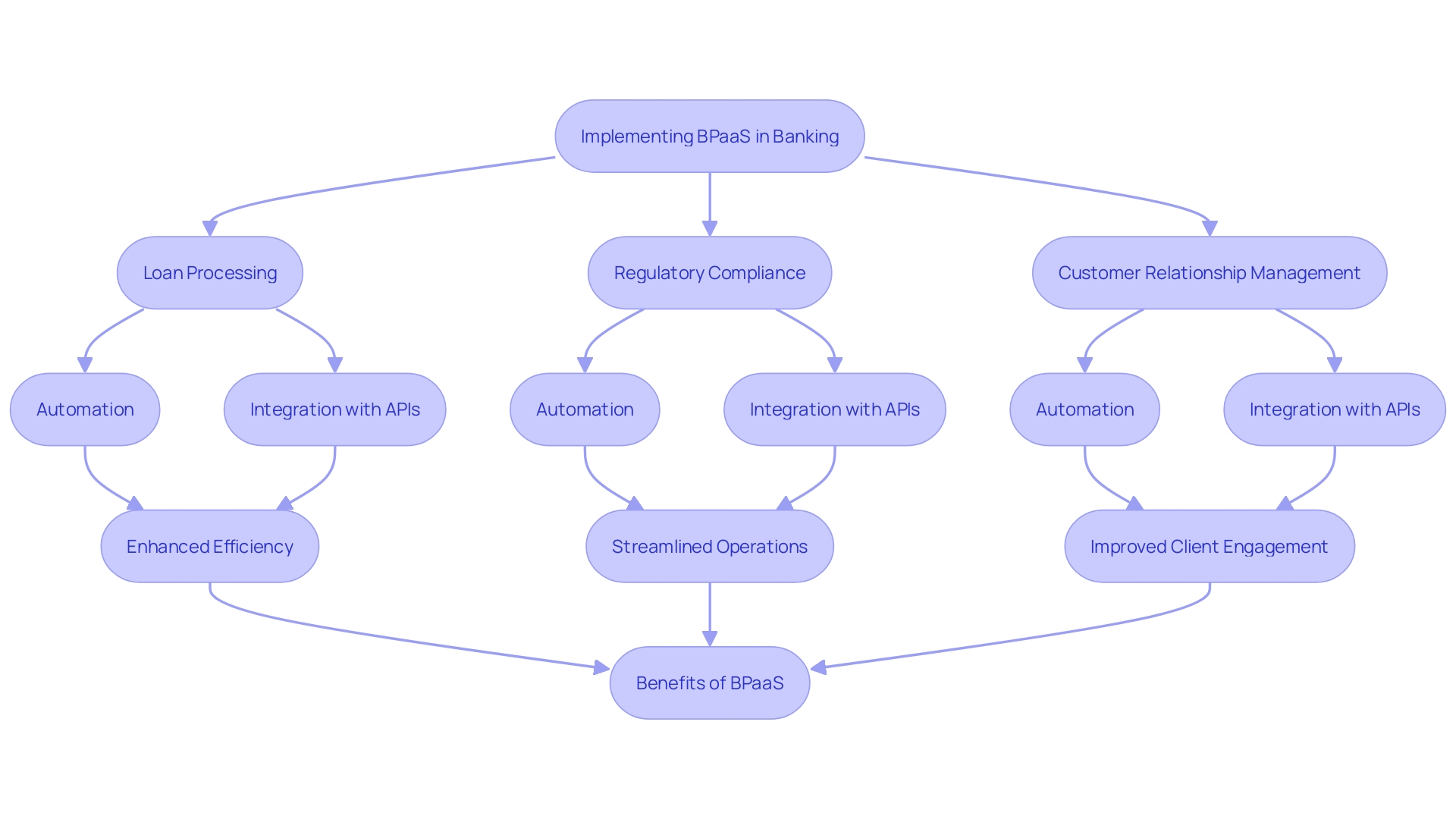Introduction
In an era where efficiency and agility are paramount, Business Process as a Service (BPaaS) emerges as a compelling solution for organizations aiming to streamline operations and drive innovation. By leveraging cloud-based services, BPaaS allows businesses to outsource and optimize specific functions, thus reducing costs and enhancing scalability. This model not only integrates various processes and technologies but also provides flexible, tailored solutions that cater to the dynamic needs of modern enterprises.
It’s no wonder that industries, particularly in the BFSI sector, are rapidly adopting BPaaS to stay competitive and meet evolving customer expectations. Through practical examples, such as Delivery Hero’s significant reduction in downtime and Bosch’s sustainable energy innovations, the transformative power of BPaaS becomes evident. This article delves into the definition, key characteristics, benefits, and real-world applications of BPaaS, illustrating how it can revolutionize business processes and drive operational excellence.
Definition of BPaaS
Commercial operations as a service enables organizations to provide workflows through cloud services, enhancing efficiency and lowering expenses. This model enables businesses to outsource specific functions, leveraging cloud-based applications and infrastructure. Business Process as a Service connects different processes, tools, and technologies, offering adaptable and scalable solutions customized to operational requirements.
Based on sector analysis, business process as a service is gaining more popularity because of its capability to simplify operations and improve client experiences. For instance, the BFSI segment is expected to dominate in the next six years, with banks and financial institutions adopting cloud-based solutions to meet customer expectations and remain competitive. This shift is driven by the need for agility and the rising volume of data requiring secure management.
Delivery Hero’s situation illustrates the advantages of business process as a service. The company, with over 53,000 employees, faced challenges with account lockouts, leading to significant downtime. By applying business process as a service, they streamlined the recovery process, reducing downtime and improving productivity.
As Melissa Twiningdavis from Accenture points out, “In recent years, supply chains have risen to one of the most important business functions on the CEO agenda. The challenge is to drive cost efficiency while continuing to embed and accelerate resiliency. This approach addresses this by offering cost-effective, resilient solutions that adapt to changing market demands.
Moreover, the business process as a service model supports sustainability initiatives, as evidenced by Bosch’s development of their solid oxide fuel cell (SOFC) system, which leverages digital engineering to create efficient, low-emission energy solutions. ‘This combination of business process as a service and sustainability highlights its ability to foster innovation and address worldwide issues.’.
In summary, this service represents a transformative approach that combines technology, scalability, and efficiency, making it a powerful tool for contemporary enterprises seeking to optimize their operations and remain competitive in a dynamic market.

Key Characteristics of BPaaS
Business Process as a Service is notable for its cloud-based delivery, scalability, and exceptional flexibility. This creative service framework offers organizations with immediate access to operational activities, enabling them to modify resources based on their changing needs. Notably, business process as a service solutions come equipped with automated features that streamline workflows and significantly enhance operational efficiency. Consequently, businesses can focus more on their core competencies rather than getting bogged down by routine processes.
For example, Delivery Hero, a global leader in local delivery platforms, faced significant challenges due to employees frequently getting locked out of their accounts. The IT team, led by Dennis Zahrt, implemented a business process as a service solution that eliminated IT as a bottleneck, drastically reducing the time employees spent locked out and unable to work. This automated solution resulted in a more efficient workflow and allowed the company to maintain productivity levels across its extensive workforce.
Furthermore, in the competitive cloud services market, a leading provider collaborated with Insight to expand effectively across a worldwide clientele. By adopting a flexible cloud service delivery approach, the company opened 18 new data centers worldwide, focusing strategically on cost, management, and capacity planning. This transition from hardware oversight to grasping customer usage needs illustrates the flexibility and expandability that this service provides.
Statistics show that BPM software, which supports BP as a Service, simplifies and automates organizational operations, resulting in enhanced efficiency and productivity. Top BPM software solutions, such as Jira Work Management, provide advanced tools for monitoring, tracking, and reporting, allowing organizations to gain deeper insights into their operations and implement necessary improvements.
Specialists such as José Aurelio Medina-Garrido underline the financial influence of workflow management, stressing the interdisciplinary aspect and scholarly interest in business operations as a service. The systematic review of literature over the last decade underscores the importance of resource allocation and scheduling in optimizing business processes. Real-world applications, such as those seen with Delivery Hero and prominent cloud providers, demonstrate the capability of business process as a service to drive efficiency and scalability in diverse operational contexts.

Benefits of BPaaS
Adopting business process as a service can result in substantial financial savings and improved operational efficiencies. Organizations can reduce overhead expenses related to maintaining internal systems and infrastructure. For instance, Delivery Hero, a local delivery platform operating in over 70 countries, faced challenges with account lockouts, which were time-consuming and hindered productivity. By optimizing their processes, they removed IT barriers, demonstrating how business process as a service can address inefficiencies.
This model also enhances agility, enabling companies to swiftly adapt to market changes, improve service delivery, and innovate more rapidly by leveraging the latest technologies. According to a study, 24% of companies experienced a 16% to 20% reduction in time to market for new products, and 27% saw improvements ranging from 11% to 15%. This agility is crucial in a competitive landscape, as demonstrated by a prominent cloud provider that scaled their services efficiently by partnering with Insight to drive flexibility and differentiation.
Adopting business process as a service enables companies to optimize operations, reduce costs, and provide more attractive prices, promoting heightened sales and client loyalty. This approach not only enhances operational efficiency but also positions companies to better meet the evolving needs of their clients and stay ahead in the market.

Examples of BPaaS Applications
Business Process as a Service can be effortlessly incorporated across different areas, including finance, support services, and human resources, to boost efficiency and improve client experiences. In the banking sector, business process as a service can dramatically streamline loan processing, automate regulatory compliance tasks, and elevate customer relationship management (CRM). For instance, Capital One, one of the largest retail banks in the U.S., has utilized Business Process as a Service to innovate and transform its offerings. By moving entirely to the cloud and using platforms like Slack to automate workflows and enhance collaboration among over 50,000 employees, Capital One has set a benchmark in digital transformation.
Furthermore, APIs (Application Programming Interfaces) play a crucial role in business process as a service, enabling seamless data and functionality exchange between diverse software systems. This integration is pivotal in open banking, allowing secure data sharing between banks and authorized third-party providers. As per a recent study by McKinsey, 88% of IT leaders at top banks recognize the increasing significance of APIs, with 81% marking them as a priority for both operational and IT functions.
BPaaS also offers substantial improvements in efficiency and client engagement. By automating business processes and minimizing manual intervention, banks can process large volumes of data quickly and accurately. Automated data processing, whether through batch or real-time processing, ensures up-to-date information is readily available for timely decision-making. This not only boosts productivity but also enhances the overall customer experience.
Furthermore, industry leaders like Moody’s Analytics emphasize the transformative potential of Business Process as a Service in the financial sector. By integrating data, analysis, and innovative technology, BPaaS providers help financial institutions navigate the complexities of modern banking with confidence. Leveraging these advanced tools, banks can streamline operations, reduce risks, and deliver exceptional services to their customers, ultimately fostering customer loyalty and satisfaction.

Conclusion
The exploration of Business Process as a Service (BPaaS) reveals its significant potential for transforming organizational operations. By enabling businesses to outsource and optimize specific functions through cloud-based solutions, BPaaS not only enhances efficiency but also reduces operational costs. The integration of various processes and technologies allows organizations to remain agile and responsive to market demands, particularly in sectors like BFSI, where maintaining a competitive edge is crucial.
Real-world applications, such as those demonstrated by Delivery Hero and Capital One, underscore the effectiveness of BPaaS in addressing operational challenges. These examples illustrate how BPaaS can streamline workflows, enhance productivity, and foster innovation. Moreover, the flexibility and scalability inherent in BPaaS solutions empower organizations to adapt swiftly to evolving customer expectations and market trends, ultimately driving customer loyalty and satisfaction.
In conclusion, embracing BPaaS offers a pathway to operational excellence, enabling organizations to focus on core competencies while leveraging advanced technologies for improved service delivery. The strategic adoption of BPaaS not only positions companies for immediate benefits but also equips them with the tools necessary to thrive in an increasingly competitive landscape. The future of business efficiency lies in the hands of those who recognize and harness the transformative power of BPaaS.

